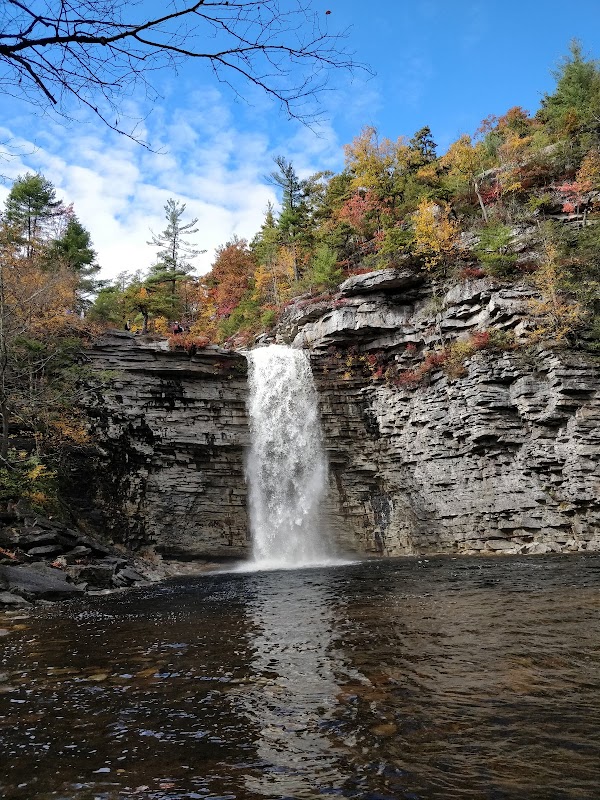
Eltingville Waterfront Cleanup Days: A Hands-On Adventure by the Shore
Join Eltingville’s Local Waterfront Cleanup Days to engage directly with Staten Island’s vibrant shoreline. This effort combines moderate physical activity with stunning water views, offering an accessible outdoor adventure that makes a tangible impact on the environment.
Wear Grippy Footwear
The combination of rocky soil and wet terrain near the shoreline demands solid traction to prevent slips and keep you stable during cleanup activities.
Bring Reusable Gloves
Durable, waterproof gloves protect your hands from sharp debris and saltwater, while being more sustainable than disposable options.
Start Early for Cooler Weather
Morning sessions offer cooler temperatures and less wind, making the cleanup more comfortable and efficient before midday heat or gusts arrive.
Stay Hydrated
Even mild activity by the coast can dehydrate you quickly. Bring at least one liter of water to stay energized throughout the 2-3 hour cleanup.
Eltingville Waterfront Cleanup Days: A Hands-On Adventure by the Shore
Eltingville, New York offers more than just scenic views of its harbor; it presents an active call to engage with the waterfront through Local Waterfront Cleanup Days. This initiative invites community members and visitors alike to step into the outdoors with a purpose — to restore and protect the shoreline where land meets water, creating a direct connection with the environment that is both revealing and rewarding.
Taking part means more than just picking up trash. The Eltingville waterfront is a living workspace where tides challenge you to move quickly, while the salt air pushes forward a sense of urgency to maintain balance with nature’s rhythms. The area covers roughly 3 miles of shoreline paths adjacent to Staten Island’s coastal edges, featuring compacted dirt trails interspersed with rocky stretches and patches where mud pulls gently at your boots after a rainfall.
Elevation changes here are minimal—mostly flat terrain with gentle inclines leading to small lookout spots. These vantage points reveal views of the Upper New York Bay, where you can watch ferries cutting through the water, daring the currents as you carry supplies and collected waste bags. The smell of brinewood and seagrass hangs in the air, while gulls and terns swoop low, inspecting the progress from above.
The cleanup is physically accessible for most, but preparation is key. Wear durable footwear with good grip for slippery rocks and mud, bring layered clothing to adjust to shifting coastal winds, and pack plenty of water. Early mornings offer crisp air and quieter docks, while afternoons bring the warmth needed to dry damp gloves and revitalize your energy.
Volunteers will find that working alongside others turns a task into a shared effort, where the shoreline gradually reveals itself cleaner and healthier — a fierce ecosystem given back a fighting chance. The combination of moderate physical effort and real environmental impact makes each hour spent here meaningful and energizing, whether you’re a seasoned outdoor lover or a casual do-gooder seeking a distinctive local experience.
Logistics are straightforward: cleanups usually last 2-3 hours, with community groups supplying tools and disposal bags. Parking is accessible nearby, and public transportation options link you seamlessly from Staten Island’s center. This cooperation of people and place transforms a simple shoreline into a field of action where every piece of trash removed is a victory for the waterfront’s future.
Nearby Trips
All Adventures
Boat Charters
Water Activities
Adventures near Eltingville, New York
Discover the unique and memorable adventures that make Eltingville, New York special.
Frequently Asked Questions
How do I sign up for Local Waterfront Cleanup Days in Eltingville?
Registrations typically happen through Staten Island community groups or the local parks department websites. Walk-ins are sometimes welcome but signing up helps organizers plan supplies and group sizes.
Are there any age restrictions for participating?
The cleanup welcomes participants of most ages. Minors should be accompanied by an adult. Tasks are scalable, so families and individuals can contribute at comfortable levels.
What happens to the trash collected during the cleanup?
Waste is sorted on-site where possible and then transported to appropriate disposal or recycling facilities by the organizing teams, ensuring proper environmental handling.
Is the terrain accessible for people with mobility issues?
Most of the shoreline cleanup path is flat and accessible, but some rocky and muddy areas may present challenges. Contact organizers in advance to plan accommodations.
What local wildlife might I see during the cleanup?
Expect to spot seagulls, terns, and occasional migratory shorebirds, especially in spring and fall. Some small crabs and coastal plants cling to the intertidal zone, quietly observing the activity.
Are pets allowed during the cleanup events?
Pets are sometimes permitted but must be leashed and well-behaved to avoid disturbing wildlife and other volunteers. Confirm specific event policies beforehand.
Recommended Gear
Sturdy Waterproof Shoes
Keeps feet dry and secure on uneven, wet shoreline terrain.
Protective Gloves
Protects hands from debris and saltwater exposure during cleanup.
Insulated Jacket
Provides warmth during cooler months when winds pick up along the coast.
Reusable Water Bottle
Staying hydrated is crucial during physical activity in any season.
Local Insights
Hidden Gems
- "The rocky promontory at Lemon Creek offers close-up views of tidal pools rarely seen from main paths."
- "A small patch of native salt marsh grass tucked behind local piers hosts delicate crabs and shore insects."
Wildlife
- "Herring gulls and ring-billed gulls actively patrol for food scraps during cleanups, reminding volunteers of their role in the coastal ecosystem."
- "Occasional sightings of diamondback terrapins in nearby marshy spots highlight sensitive species benefiting from cleanup efforts."
History
"Eltingville’s waterfront has a rich history as a working harbor, with fishing and ship repair shaping the community from the 19th century onward. The cleanup days carry forward this legacy through stewardship rather than industrial use."
